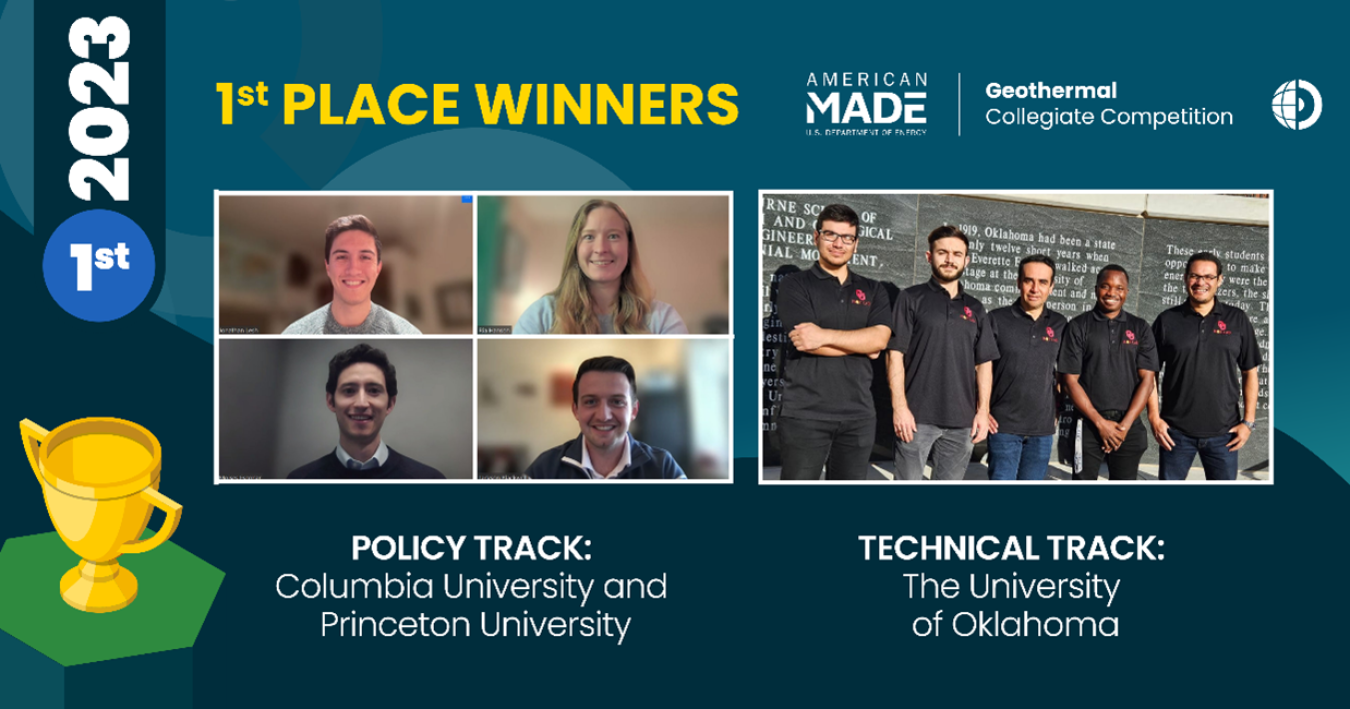
Back-to-back national champions at the University of Oklahoma.
Not a sports team but rather five graduate students at the University’s Mewbourne College of Earth and Energy who recently named winners in the U.S. Energy Department’s 2023 Geothermal Collegiate Competition for their design of a system to heat a greenhouse for the Osage Nation.
Another team from the University of Tulsa won second in the same competition
The five who made up Team GeoTribe at OU are Nabe Konate, Jose Aramendiz, Gurban Hassanov, Cesar Vivas and Vagif Mammadzada. They designed a system of geothermal wells to heat and cool a 40,000-square-foot greenhouse for the Osage Nation.
The greenhouse, located in Pawhuska was built during the COVID-19 pandemic when there was a breakdown in the Tribe’s food system. The geothermal system design created by the OU graduate students will help alleviate the challenge of maintaing a constant year-round growing temperature.
Team GeoTribe from OU won first place in the Technical Track and Aurora Geothermal Solutions from Columbia University and Princeton University took first in the Policy Track for their innovative proposals for geothermal systems in communities across the country. Each first-place team will receive a $10,000 cash prize plus funding to host a community event where they will present their projects and discuss geothermal.
Technical Track teams designed a geothermal heating and cooling system from the ground up for a proposed community of their choice. Teams in the Policy Track, which was offered for the first time this year, conducted an analysis of the regulatory environment and economic feasibility for a proposed geothermal system.
“These teams did a tremendous job looking at ways geothermal energy can serve their communities with clean, reliable heating and cooling—24 hours a day, 7 days a week,” said Jeff Marootian, Principal Deputy Assistant Secretary for Energy Efficiency and Renewable Energy. “We’re always impressed by the caliber of projects brought to this competition. Seeing such ingenuity in action gives us an exciting glimpse at the possibilities ahead as these students help us shape our clean energy future.”
The second-place projects are:
- Technical Track: Kyle White’s Team from the University of Tulsa took second place for designing a system to bring geothermal to the Lorton Performance Center—a musical and performance arts hub that currently accounts for 6% of the university’s heating and cooling costs—by using horizontal piping installed under a nearby athletic field.
- Policy Track: Davidson Lab’s Team from the University of California San Diego proposed using federal incentives to revitalize the Boise Cascade Mill—a brownfields site in Cascade, Idaho—with a geothermal system that could meet an 8.6-GWh annual energy demand for over 2,800 residents while creating nearly 100 local jobs.



